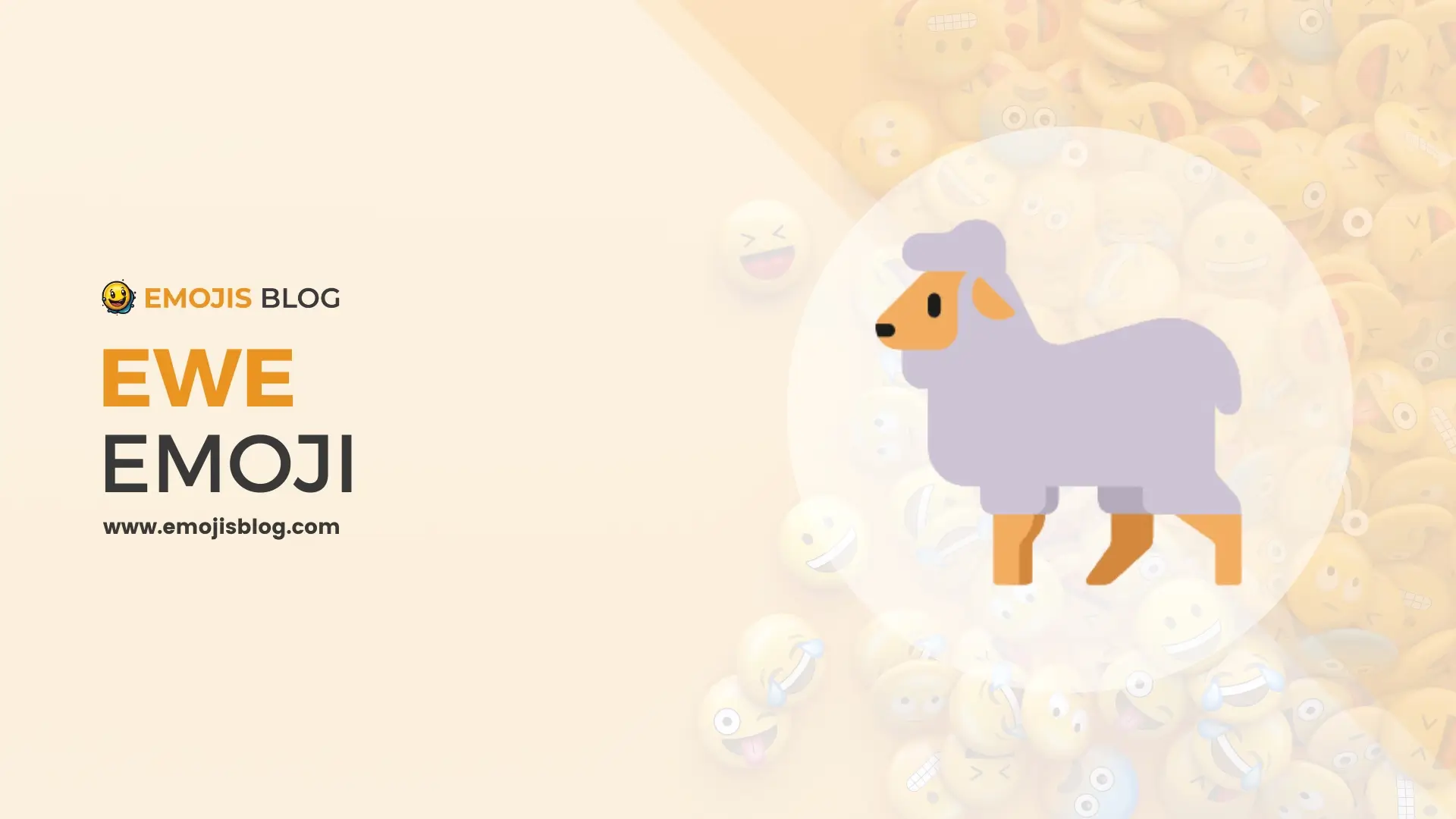What Does The Ewe Emoji 🐑 Mean?
🐑
Ewe Emoji 🐑 Meaning
The ewe emoji 🐑, commonly referred to as the “sheep” emoji, symbolizes a variety of concepts depending on the context in which it’s used. Primarily, it represents the animal itself, often evoking themes of gentleness, innocence, and purity. It can also be used to illustrate conformity or “sheep mentality,” where individuals follow the crowd without independent thought. Additionally, the ewe emoji holds religious significance, particularly in Christian contexts, symbolizing the faithful followers or the idea of being guided by a shepherd. Its versatility makes it applicable in conversations about animals, fashion (especially wool), group behavior, and even humor.
Technical Information
| Attribute | Details |
|---|---|
| Emoji | 🐑 |
| Unicode Name | Ewe |
| Unicode Codepoint | U+1F411 |
| Introduced in Unicode | Version 6.0 |
| Introduced in Emoji | Emoji 1.0 |
| Shortcode | :sheep: |
| Category | Animals & Nature |
| Subcategory | Animal Mammal |
| Alternate Names | Sheep |
| Platforms | Available on major platforms (Apple, Google, Samsung, Microsoft, etc.) |
| Appearance | Depicted as a white or off-white sheep, standing on all fours, with a woolly coat |
| Related Emojis | 🐏 (Ram), 🐐 (Goat), 🐄 (Cow), 🐖 (Pig) |
| Common Uses | Representing sheep, gentleness, innocence, conformity, wool, farming, religious symbolism |
Understanding the Ewe Emoji 🐑: A Comprehensive Guide
Emojis have become an integral part of digital communication, allowing users to express emotions, ideas, and concepts with just a few taps on their screens. Among the vast array of emojis available, the ewe emoji 🐑, commonly referred to as the “sheep” emoji, is one that often prompts curiosity. What does it symbolize, and how is it used in different contexts? This article explores the meanings, usage, and cultural significance of the ewe emoji 🐑.
The Basic Meaning of the Ewe Emoji 🐑
At its core, the ewe emoji 🐑 depicts a sheep, an animal commonly associated with gentleness, docility, and innocence. The emoji is visually represented as a white or off-white fluffy sheep, standing on all fours, with a characteristic woolly coat. The ewe emoji typically symbolizes the animal itself or concepts related to it, such as:
- Farm Animals: The ewe is a common farm animal, so the emoji can represent agriculture, farming, or rural life.
- Wool and Textiles: Sheep are sources of wool, so the emoji might be used to refer to wool products, knitting, or the textile industry.
- Christian Symbolism: In Christian contexts, the sheep is a symbol of the faithful, often used to represent followers of Christ as a shepherd.
Cultural and Symbolic Interpretations
The ewe emoji 🐑 carries various cultural and symbolic meanings that go beyond its literal depiction. Understanding these interpretations can enhance how you use this emoji in your communication.
1. Symbol of Innocence and Purity
Sheep are often seen as innocent and pure animals, and the ewe emoji can convey these traits. It’s sometimes used to represent a person who is naïve or innocent, often in a positive light, but sometimes also to imply gullibility.
2. Representation of Conformity
The phrase “sheep mentality” refers to the idea of blindly following others without independent thought. The ewe emoji 🐑 can be used to signify conformity, herd behavior, or the tendency to follow the crowd. This usage is often seen in discussions related to social dynamics, peer pressure, or critique of uncritical thinking.
3. Religious Connotations
In many religious texts, especially within Christianity, sheep symbolize followers of God, with Christ often referred to as the “Good Shepherd.” The ewe emoji can be used in religious discussions or to reference spiritual themes related to guidance, faith, and devotion.
4. Humor and Playfulness
On a lighter note, the ewe emoji 🐑 is sometimes used in a playful or humorous manner. It might be included in messages that involve puns, jokes, or wordplay related to sheep or animals in general.
Common Uses of the Ewe Emoji 🐑
The ewe emoji 🐑 is versatile and can be used in various contexts, both serious and lighthearted. Here are some examples of how it is commonly used:
- In Conversations About Animals: Whether discussing sheep directly, mentioning farm life, or sharing images of nature, the ewe emoji helps to visually convey the topic.
- In Messages About Clothing or Knitting: Given sheep’s association with wool, the emoji might appear in conversations about fashion, especially when talking about woolen garments or knitting projects.
- To Illustrate Conformity: If someone is talking about a situation where people are “following the herd,” the ewe emoji might be used to emphasize the point.
- Religious Messaging: The emoji might be included in messages of faith, spiritual guidance, or when referencing Biblical passages that involve sheep.
Examples of the Ewe Emoji 🐑 in Use
Here are a few examples that show the versatility of the ewe emoji 🐑 in different contexts:
- Conversation About Fashion:
- “I just bought the coziest wool sweater! 🐑🧶”
- Discussion on Group Behavior:
- “Everyone just followed the leader without thinking for themselves 🐑”
- Religious Message:
- “The Lord is my shepherd 🐑🙏”
- Humorous or Playful Use:
- “Feeling a little sheepish today 🐑😅”
Conclusion
The ewe emoji 🐑, while simple in its design, carries a wide range of meanings depending on the context in which it is used. From representing innocence and purity to symbolizing conformity or referencing religious texts, this emoji is a powerful tool in digital communication. Whether you’re discussing farm animals, engaging in a spiritual conversation, or making a light-hearted joke, the ewe emoji can enhance your message and add depth to your online interactions.

